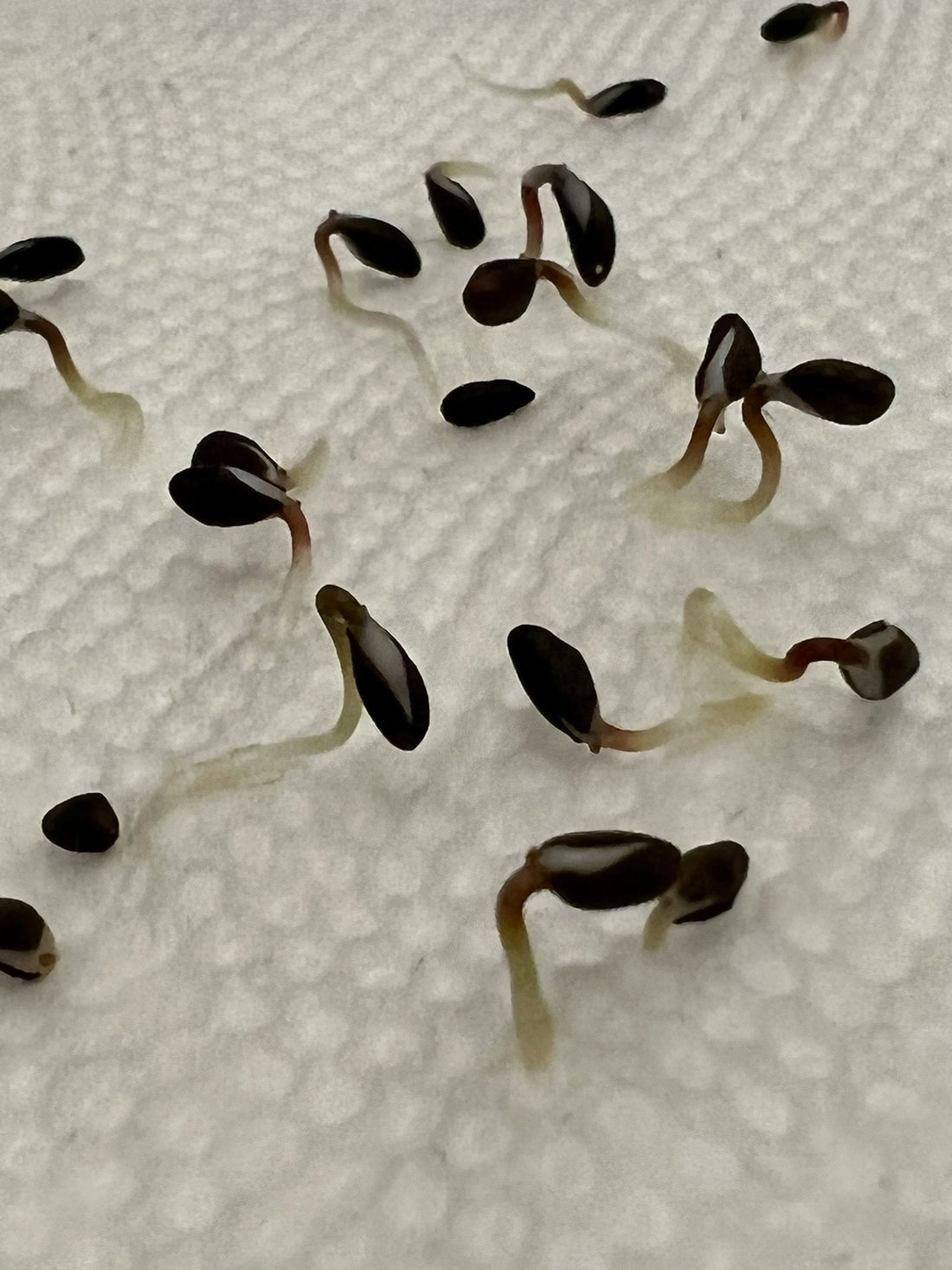Planting a successful garden depends a lot on having good quality, viable seeds that have a high germination rate. Nobody wants to waste time and effort on seeds that won't sprout. But how can you tell if your seeds are still good? Some seeds are still perfectly growable 4-8 years after they're collected, while others are only good for a year. In this comprehensive guide, we'll explore various methods to test seed viability and determine the germination rate, ensuring that you have the best chances of growing a thriving garden.
Understanding Seed Viability
Seed viability refers to the ability of seeds to germinate and grow into healthy plants. Most seeds have a certain shelf life, and their viability decreases over time. Factors such as storage conditions, age, and seed type can affect how long seeds remain viable.
This Seed Viability Chart shows the average lifespan of different vegetable and herb seed types.
The Water Test
One popular method to determine seed viability is the water test. This simple test allows you to separate viable seeds from non-viable ones. Here's how to do it:
- Take the seeds you want to test and place them in a container of water.
- Let the seeds sit in the water for about 15 minutes.
- Observe the seeds. If they sink to the bottom, they are likely viable. If they float, they may not be viable and should be discarded.
The Germination Test
While the water test provides a quick indication of seed viability, the germination test is a more accurate and reliable method. This test allows you to determine the germination rate of your seeds, giving you a clearer picture of their viability.
- Select a sample of seeds from the packet you want to test. It's recommended to use at least 10 seeds to get a representative result.
- Take a paper towel and dampen it with water. Make sure it's moist but not dripping wet.
- Place the seeds on one half of the damp paper towel, ensuring they are evenly spaced.
- Fold the other half of the paper towel over the seeds, covering them completely.
- Place the paper towel with the seeds in a clear plastic bag or container.
- Seal the bag or container to create a mini greenhouse effect.
- Label the bag or container with the seed variety and the date of the test.
- Find a warm location for the seeds to germinate. A temperature above 70 degrees Fahrenheit is ideal.
- Check the seeds regularly to monitor their progress. Some seeds may sprout within a few days, while others may take longer.
- Record the number of seeds that have sprouted and calculate the germination rate.
To calculate the germination rate, divide the number of sprouted seeds by the total number of seeds tested and multiply by 100. For example, if out of 10 tested seeds, 8 have sprouted, the germination rate would be 80%.
It's important to note that different seed varieties have different germination times. Some seeds may sprout within a few days, while others may take weeks. Refer to the seed packet or reputable sources for specific germination times.
Frequently Asked Questions
Can seeds that sink in the water test still be planted?
Yes, seeds that sink in the water test can still be planted. The water test is a preliminary test to determine seed viability. Sinking seeds are more likely to be viable, but it doesn't guarantee 100% germination. Planting the sinking seeds directly in the soil or drying them thoroughly and planting them at the appropriate time increases the chances of successful growth.
What should I do with the sprouted seeds from the germination test?
If it's the right time for planting, you can go ahead and plant the sprouted seeds in your garden. However, if it's not the appropriate time or you have other reasons for not planting them immediately, you can carefully remove the sprouted seeds from the paper towel and transfer them to a suitable growing medium. Once the seeds have been transplanted, continue caring for them until it's time to transplant them into the garden.
How should I store my seeds to maintain their viability?
Proper seed storage is essential for preserving seed viability. Here are some tips for storing seeds:
- Keep seeds in a cool, dry place away from direct sunlight and extreme temperature fluctuations. A temperature of around 40 to 50 degrees Fahrenheit is recommended.
- Use airtight containers or resealable bags to protect seeds from moisture and pests.
- Label each container or bag with the seed variety and the date of collection or purchase.
- Consider storing seeds in the refrigerator or freezer for long-term preservation. However, ensure they are thoroughly dried and placed in moisture-proof packaging before freezing.



